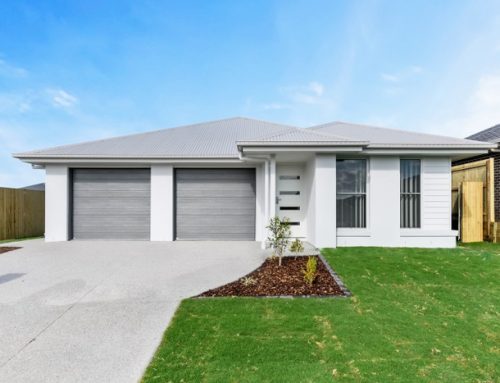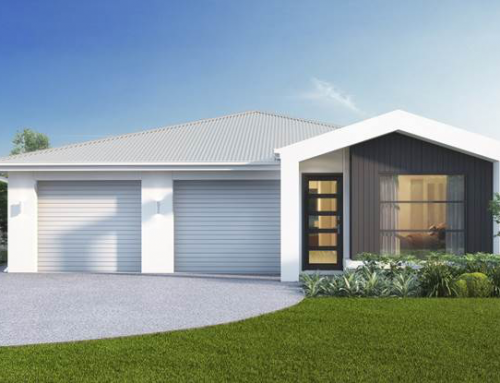
We all know that when you purchase real estate you have complete title and control over your property – unlike shares or managed funds, which are subject to the decisions of board members and executive managers and the performance of publicly listed companies.
At any stage while you own an investment property you can rent, manage and maintain the property, move into or dispose of the property without the risk of exit fees imposed by some managed investments.
These are the basics of why investors choose property – but what about the other benefits of residential property over other asset types?
Tangible value with leverage opportunities
You can use the equity in your property to leverage (borrow to invest) into other investment types or more properties.
The equity in your property is the difference between the value of the property and the mortgage owing on the property.
For example: Valuation ($300,000) – Mortgage ($200,000) = Equity ($100,000)
Something to bear in mind when calculating your usable equity is that your lender will impose two factors:
- bank registered valuation
- 20% security over the mortgage.
Your lender will always conduct an independent bank registered valuation on your property for the purpose of lending money against it.
A bank registered valuation is the most conservative valuation on the property, typically the value that the bank knows it can dispose of the property tomorrow.
This differs to the market or retail valuation which is usually much higher. This valuation may be suggested by a vendor or agent and while it may be met by the buyer might not reflect the actual value of the home.
Your bank will always hold a security of 20% over your property for as long as you have a mortgage (unless you pay lenders mortgage insurance (LMI)).
This is considered the 20-80 Rule of borrowing money for property from the bank (i.e. for every $20,000 you present to the bank, the bank will lend you $80,000, given you can afford the debt servicing repayments and meet other lending criteria).
With this in mind your revised calculation for “usable” equity should be:
- bank valuation ($280,000 x 80% = $224,000) – mortgage ($200,000) = “usable” equity ($24,000)
In this case you have up to $24,000 in usable equity to leverage into other investments (before paying lenders mortgage insurance (LMI)).
Over time and as your property increases in value and your mortgage decreases, you’ll have more usable equity available for leveraging into other investments including:
- investment properties (building a portfolio)
- shares and managed funds through equity or margin loans
- small business investments and private equity loans.
Leveraging a property portfolio
If you have a property portfolio that continues to grow in value you may like to tap into your equity for lifestyle or retirement funding purposes.
Many leading banks now offer reverse mortgage products which allow home owners to set up a reverse mortgage, paying them a monthly allowance from the funds available in the equity of their home (or investment portfolio).
Income producing asset
Property assets including residential, commercial, industrial, hotel and resort all have the capacity to produce regular income streams through rental payments from tenants. Different property classes produce different yields and capital gains due to their nature and location.
Yield is the sum of the annual rental income divided by the purchase price of the property.
Typically commercial property produces higher yields but attracts greater management and maintenance costs which offset this yield.
Short term accommodation property (hotel or resort) may offer high rental income potential but will lack regularity (due to seasonal or holiday vacancies) and capital gain (due to limited differentiation). Ongoing body corporate, management and maintenance fees may also impact yield.
House and land residential properties offer the potential for more regular rental income at medium yield. While vacancy rates may risk total annual rental incomes management and maintenance fees are typically less than alternative property classes.
Capital gain is potentially greater in areas of high population growth, and sustainable economies with ongoing infrastructural development.
Income producing property investments allow you to build a well geared portfolio largely funded by your tenant and the Tax Office.
Tax effective asset
There are significant tax benefits available for investing in economic driving assets, in particular residential property. After all, the cost of tax relief for investors is far less than the cost of providing housing for Australia’s growing population base which will reach 24.5 million people in July 2017.
Tax deductions from losses produced from a rental property are generally made up of:
- interest cost of borrowed funds to purchase the rental property
- acquisition and associated management costs of the rental property
- depreciation of building and income producing items within the rental property.
Duncan earns $100,000 per year and recently purchased a $360,000 house and land investment property in South East Queensland which has a secured tenant paying $340 per week (4.9% yield). After offsetting the rental income against all associated deductible costs and fees the losses are approximately $26,000 per annum which gives Duncan a tax return of approximately $11,500 each year.
After lodging an PAYG income tax withholding variation to the Tax Office Duncan’s employer changed his withholding rate so that he received his tax benefits weekly ($11,500 / 52 = $221 pw). This $221 per week alongside the weekly rental income of $340 per week helped fund the investment which has total weekly running costs (including mortgage, rates, insurances, management and accounting) of $620 per week. Which means Duncan’s total out of pocket cost was less than $60 per week.
Tax effective income producing assets are a great way to build a well diversified investment portfolio which takes advantage of your current income levels without impacting your current lifestyle or standard of living.
Diversification
You should develop a plan that allows you to build a well diversified investment portfolio. This means you should try and spread your investment exposure (and risk) over a variety of asset classes and industries.
For example some investors may diversify their investment strategy to have interests in property (main or rental residence), shares and managed funds (across difference industries), cash savings and compulsory superannuation.
You may build a diversified property portfolio by investing in residential property alongside your main residence (family home). Many investors consider their main residence an investment in one particular market, and choose other rental properties in other markets to diversify their exposure and take advantage of growth factors those markets offer.
Kevin is a miner who owns a $400,000 home with a $200,000 mortgage in Central Queensland. Kevin has experienced considerable capital growth in his home in recent years because of the resources boom but acknowledges the current growth which is underpinned by one industry cannot be sustained. He chooses to invest in a house and land rental properties in greater Brisbane and greater Melbourne to diversify his property portfolio and take advantage of two markets which are underpinned by hundreds of industries and sustainable population growth.
Kevin’s aim is to use the two investment properties for tax benefits and long term capital gain while using increased cash flows to reduce his mortgage and risk at home.
By building a property portfolio which has interests in different regional markets investors can achieve greater more sustain returns over time with reduced risk.
Strong capital growth over time
Property tends to grow in value over time and typically moves in opposite cycles to other major asset classes (bonds and shares).
A good tax effective rental property may allow you passive capital growth over many years. In other words the property will grow in value (typically double in value every seven to ten years depending on location) while the Tax Office and the tenant share the cost of maintaining the property with you.
Investors can build a passive property portfolio in which over time the equity can be used to fund other investments, supplement incomes, and a range of lifestyle choices.
Susan purchased three investment properties over a six year cycle. In 2026 her investment property portfolio will be worth approximately $4 million (approximately $1.3 million each) with a total investment debt of approximately $1.3 million providing tax effectiveness. The property portfolio has an ongoing average growth rate of just 7% per annum (or approximately $280,000 in 2026).
Susan may choose to have her mortgage broker structure a reverse mortgage facility against her property portfolio which allows her to supplement income against the equity in the portfolio by just $100,000 per year. Considering the size and growth of the portfolio this strategy if an ideal way for Susan to maintain a standard of living she desires without increasing her overall loan to value ratio (LVR) of around 35%.






